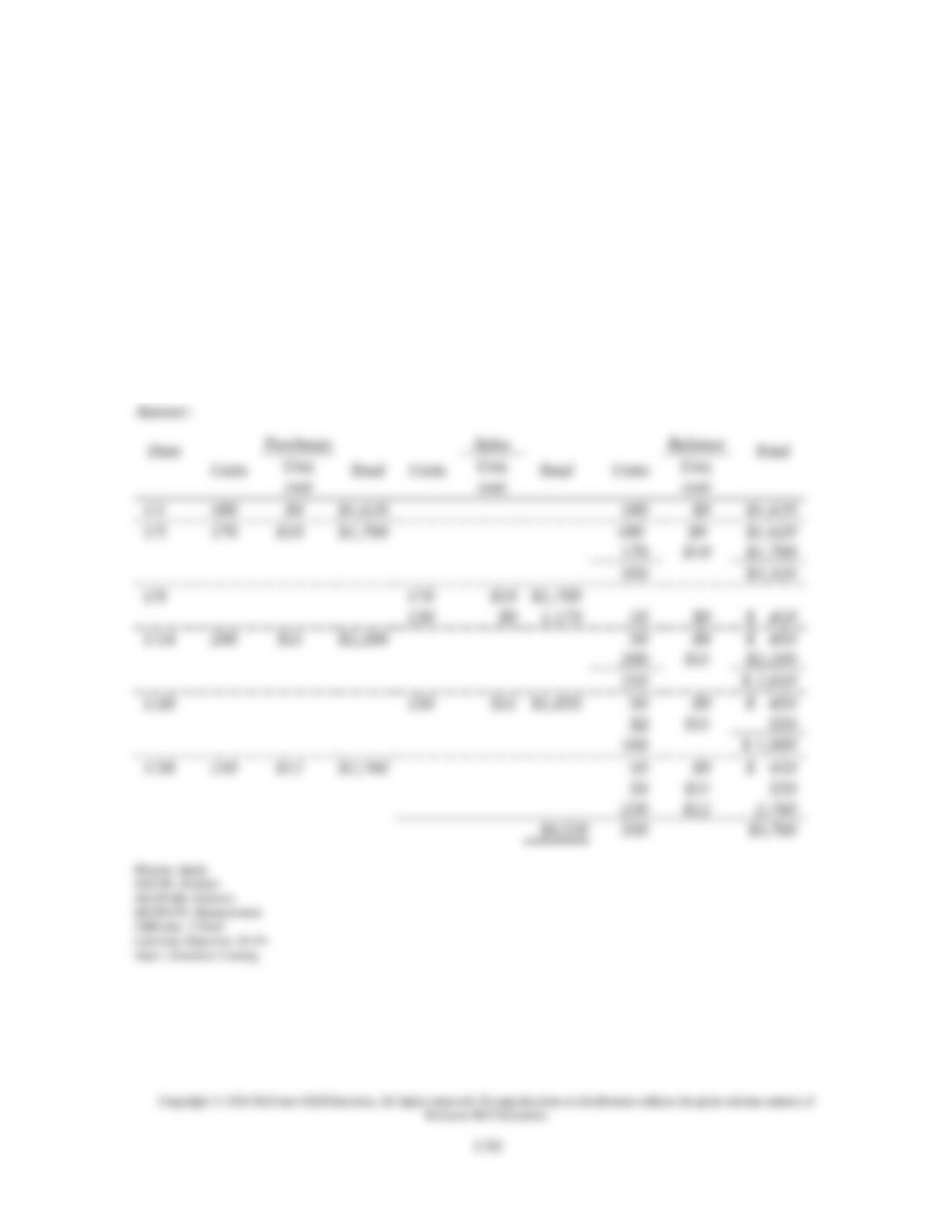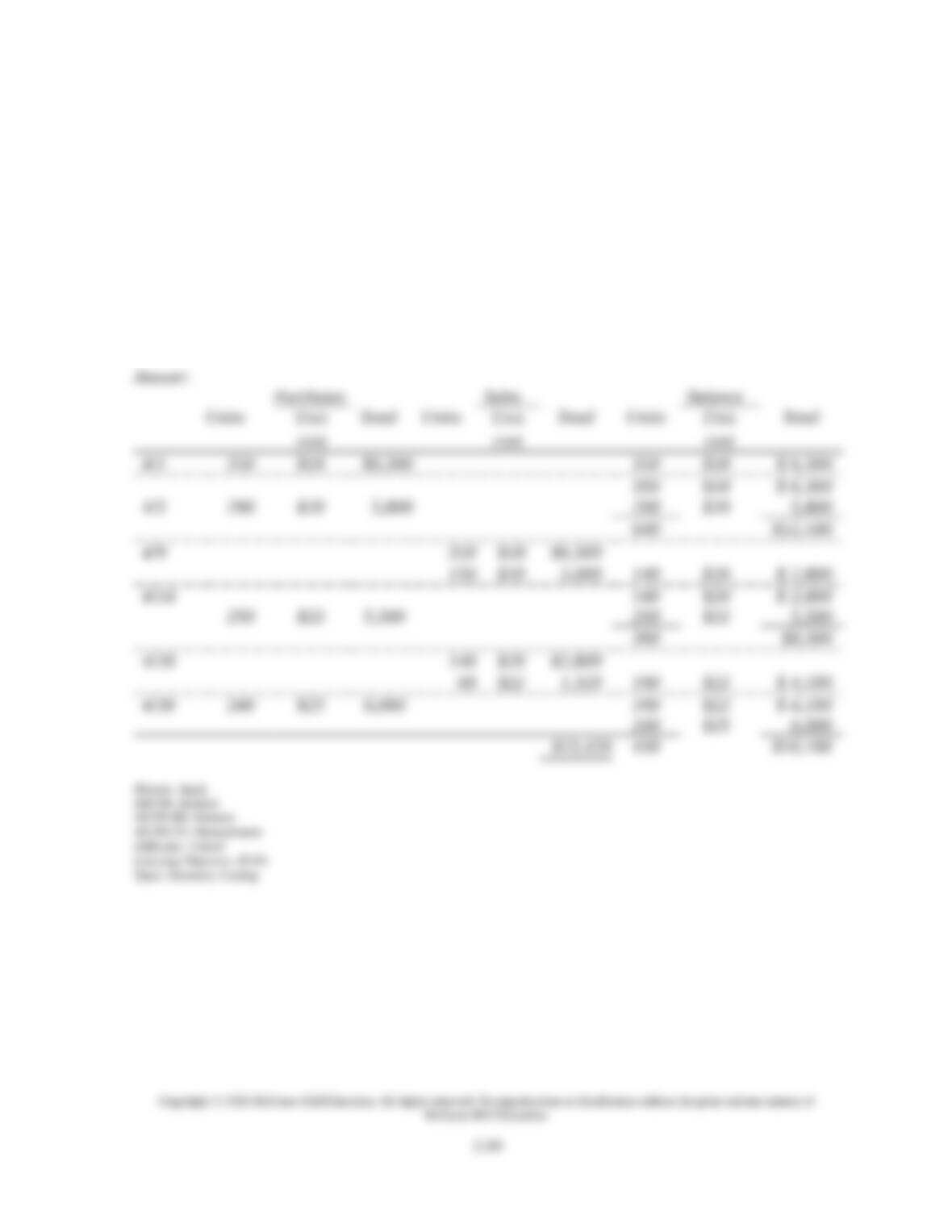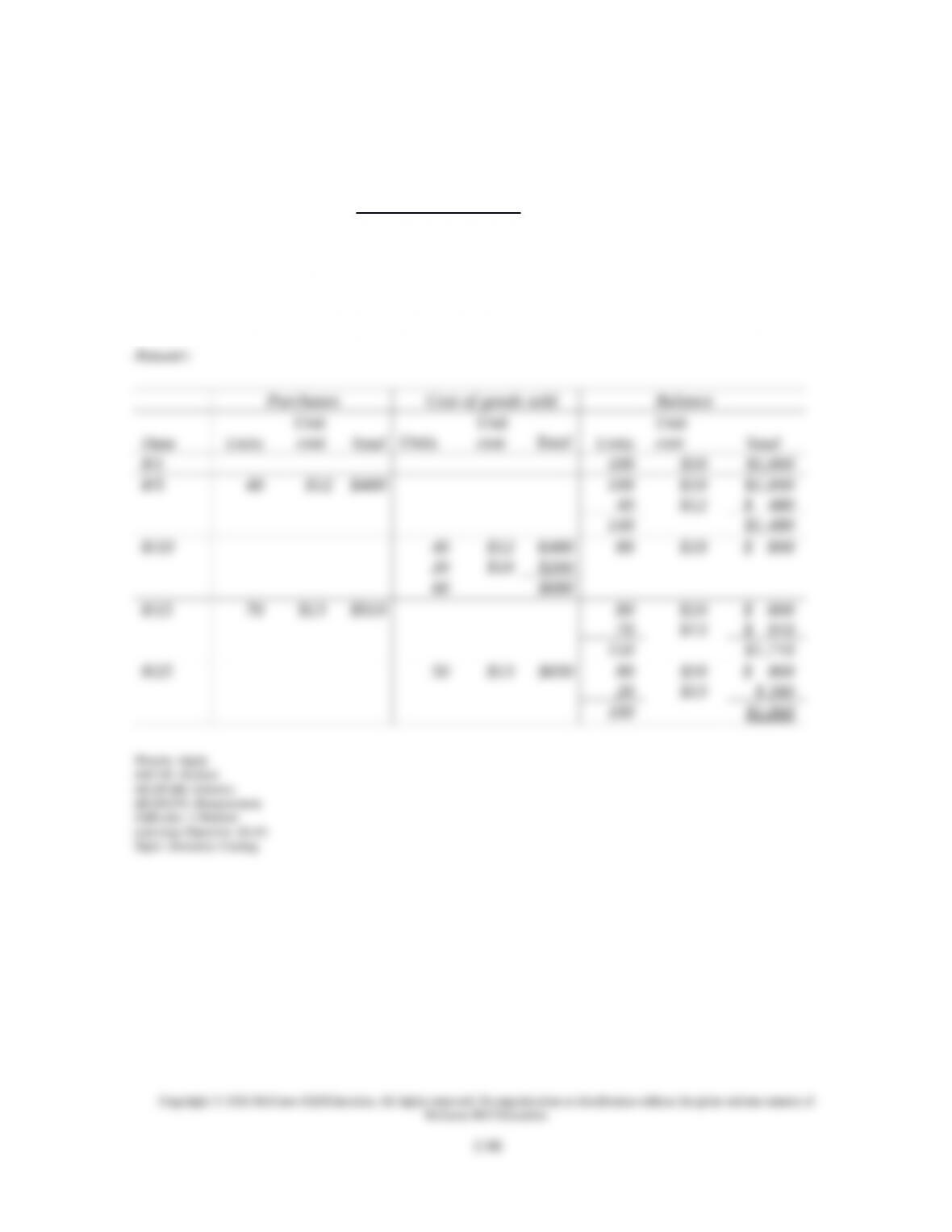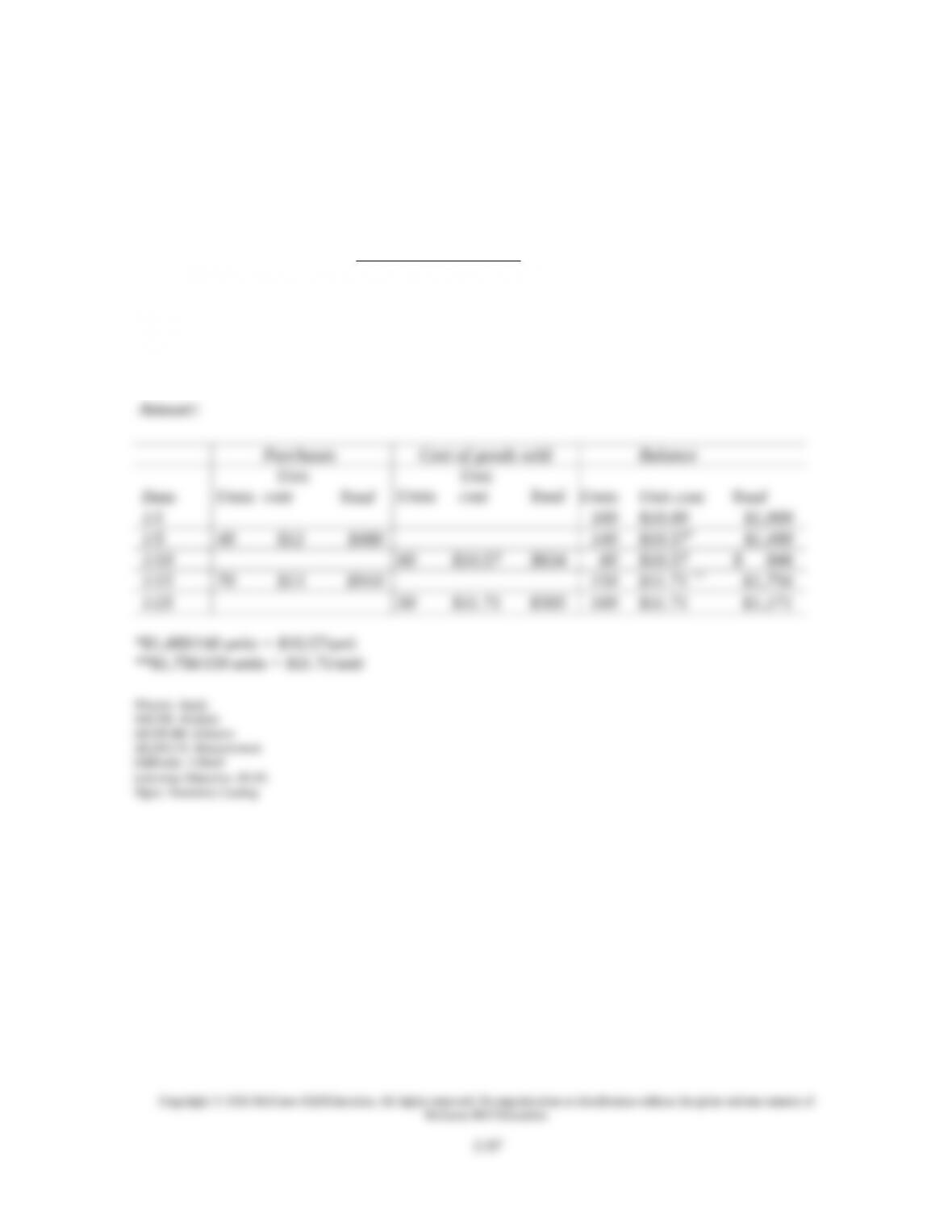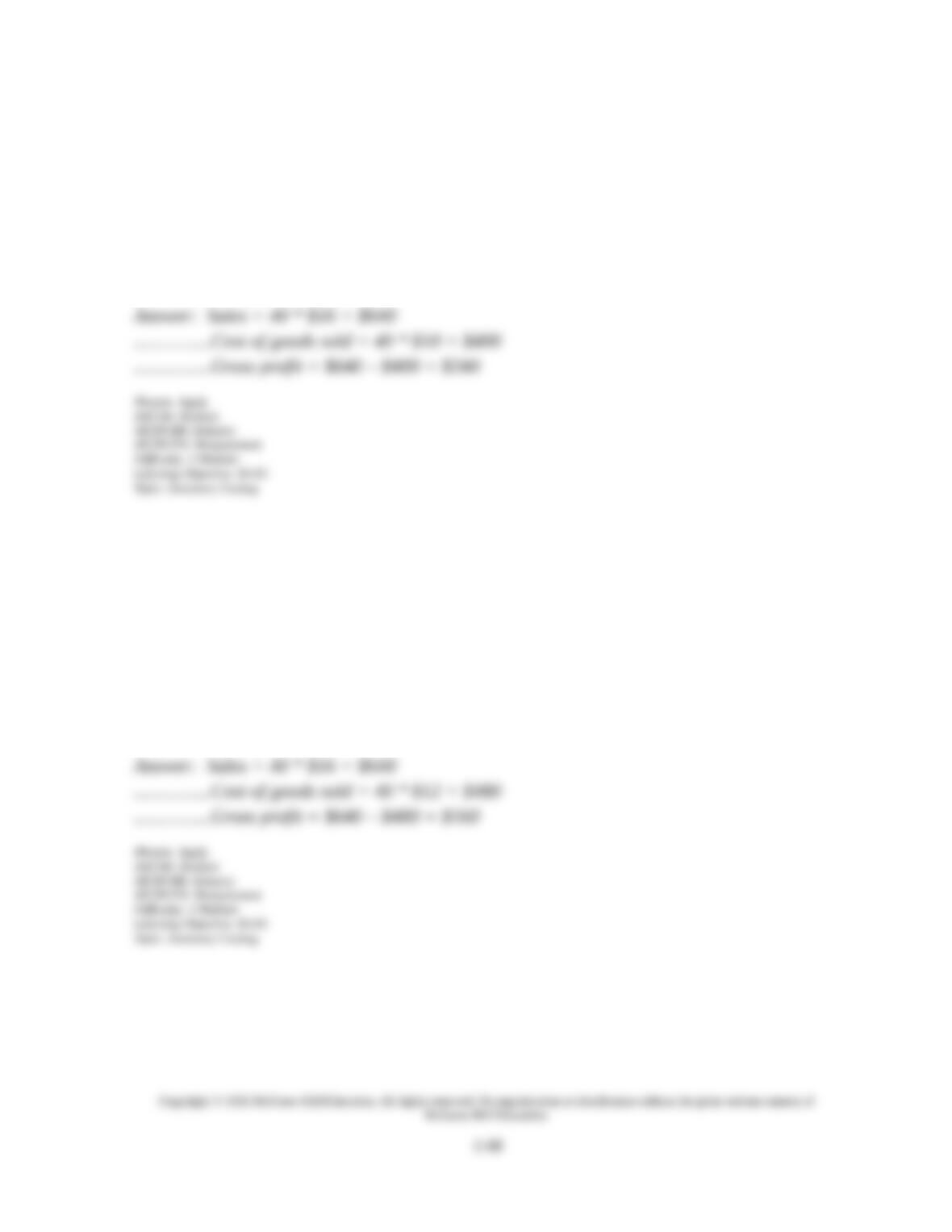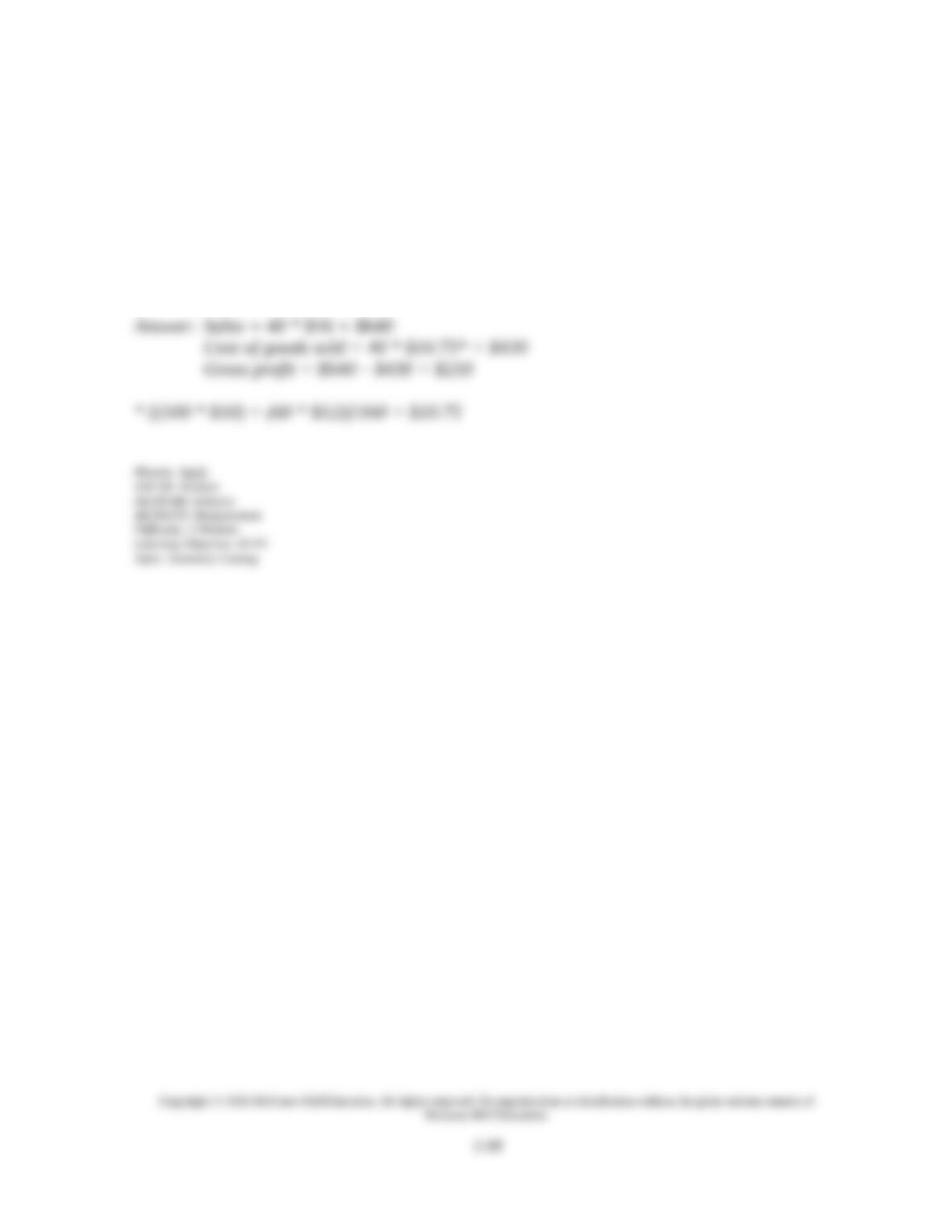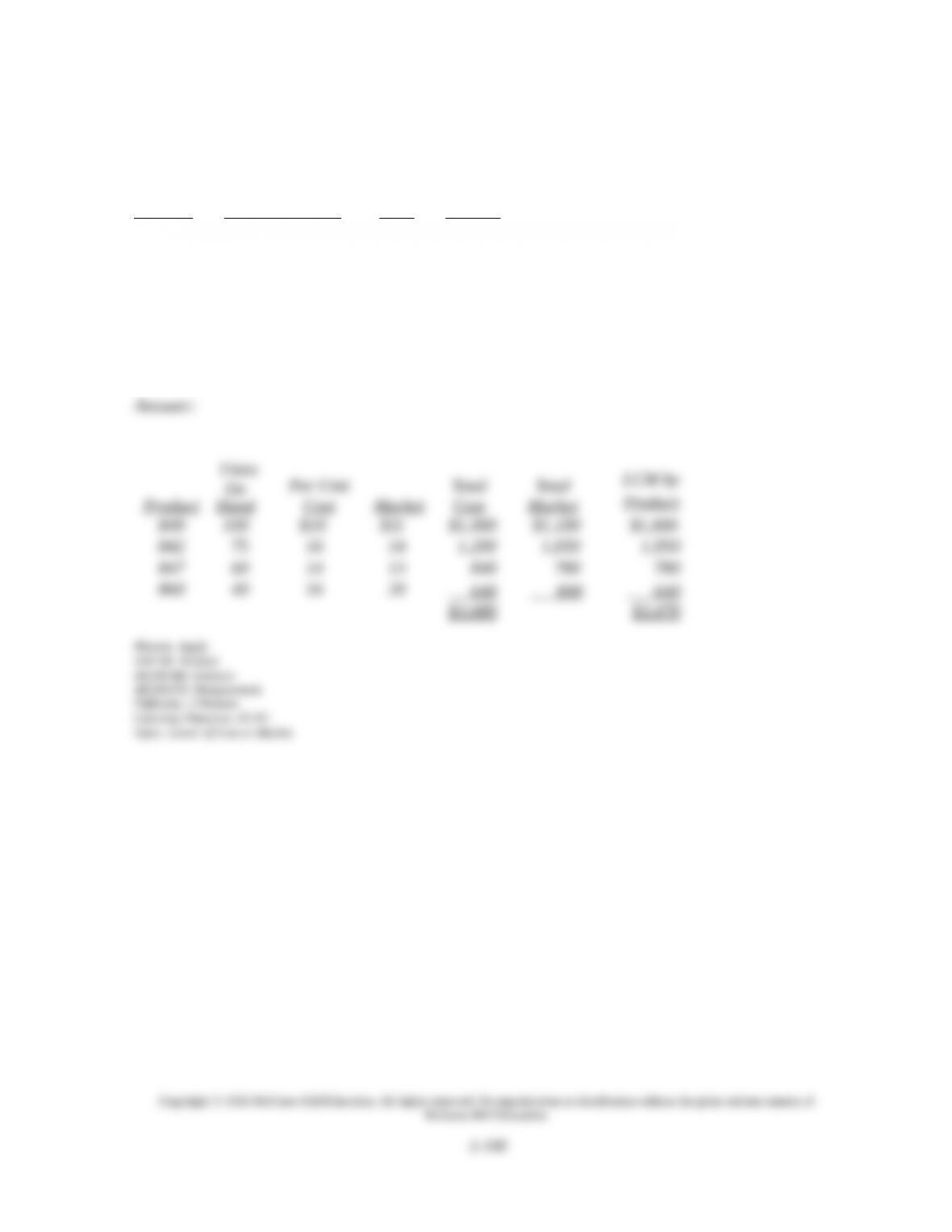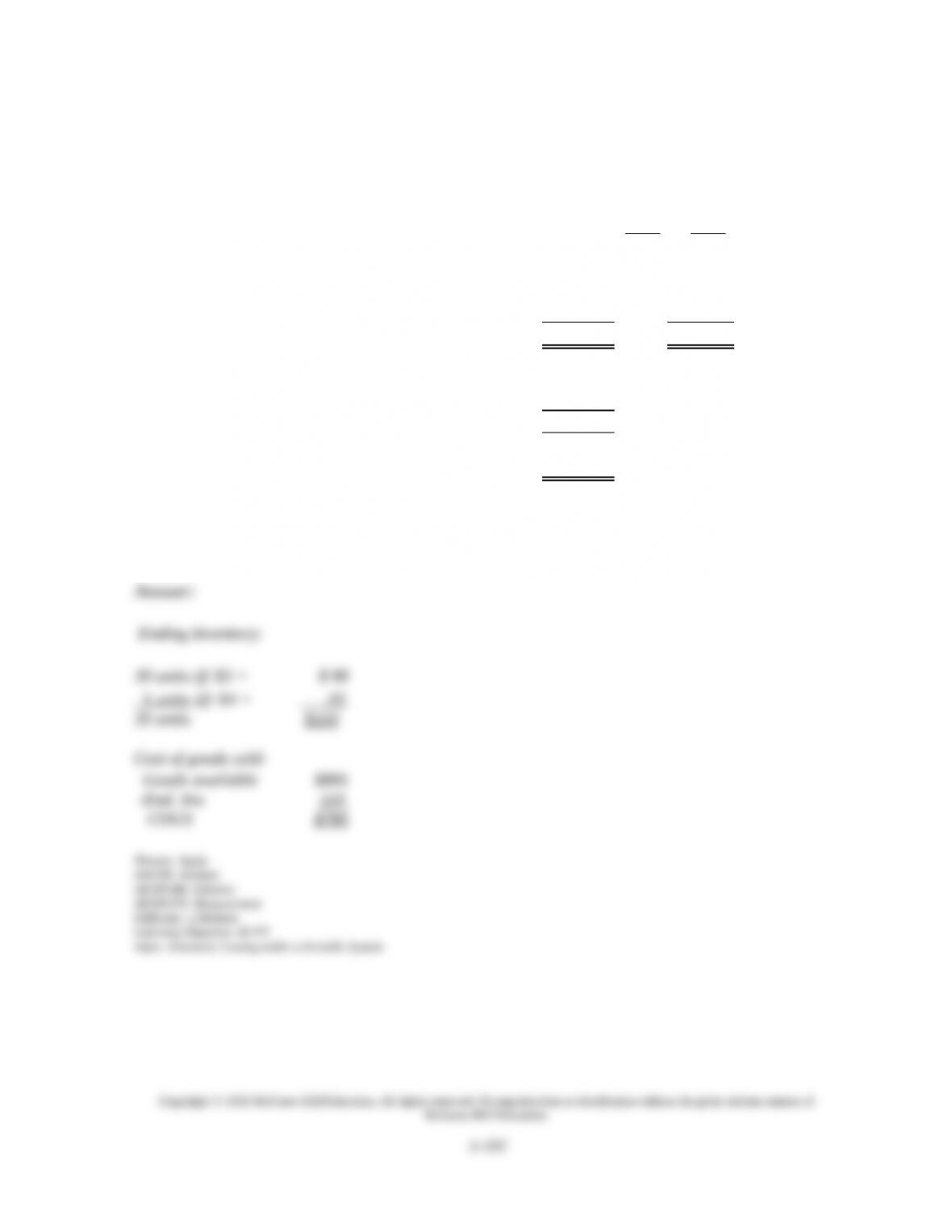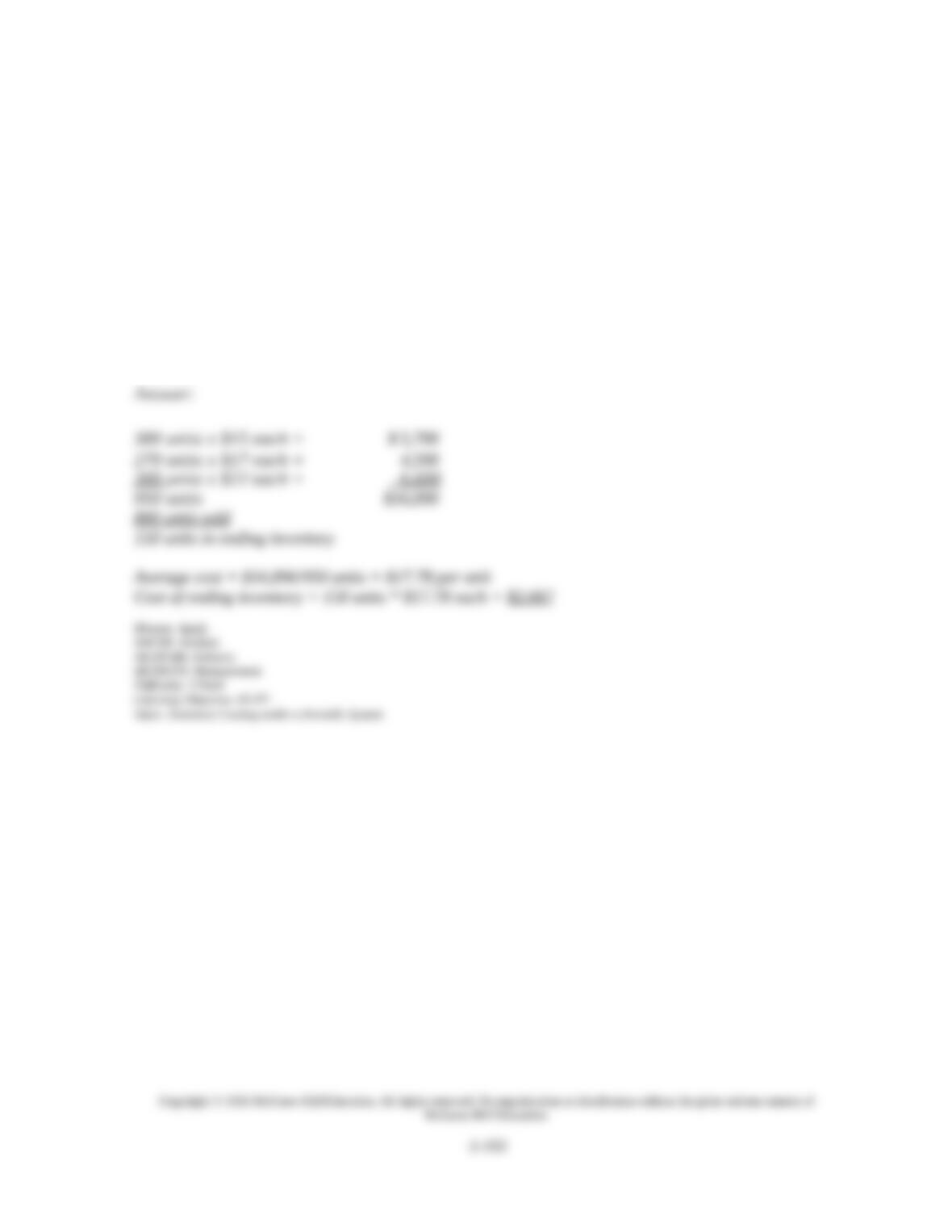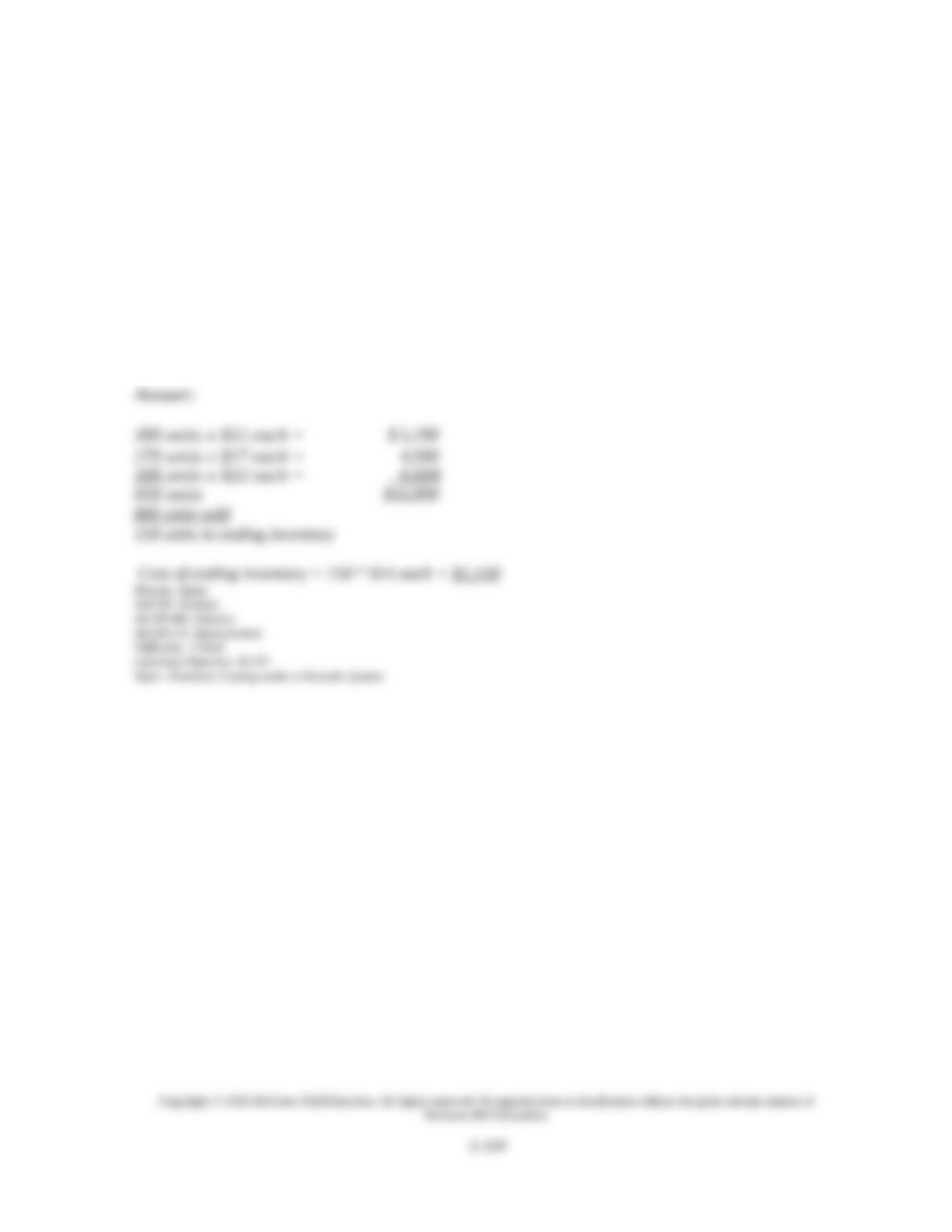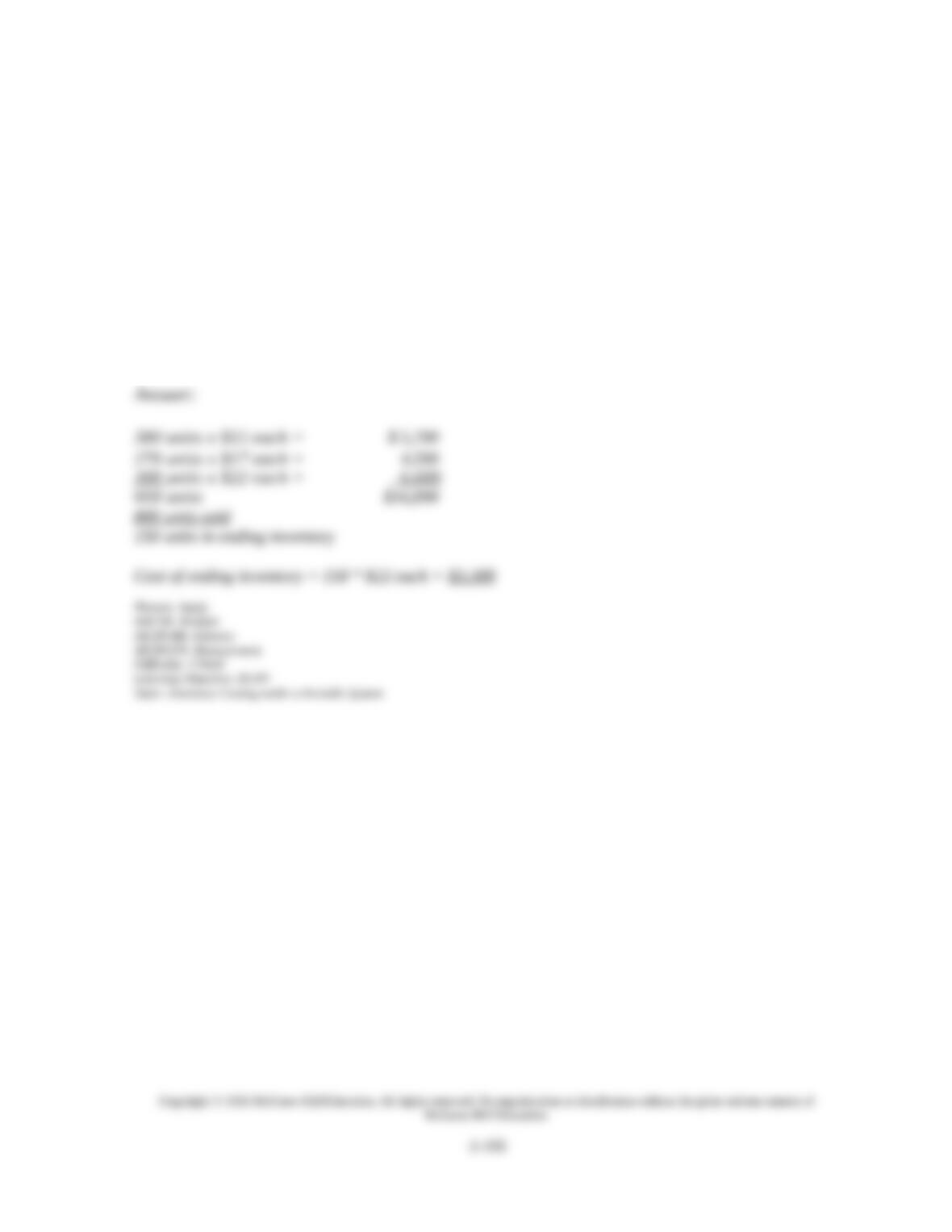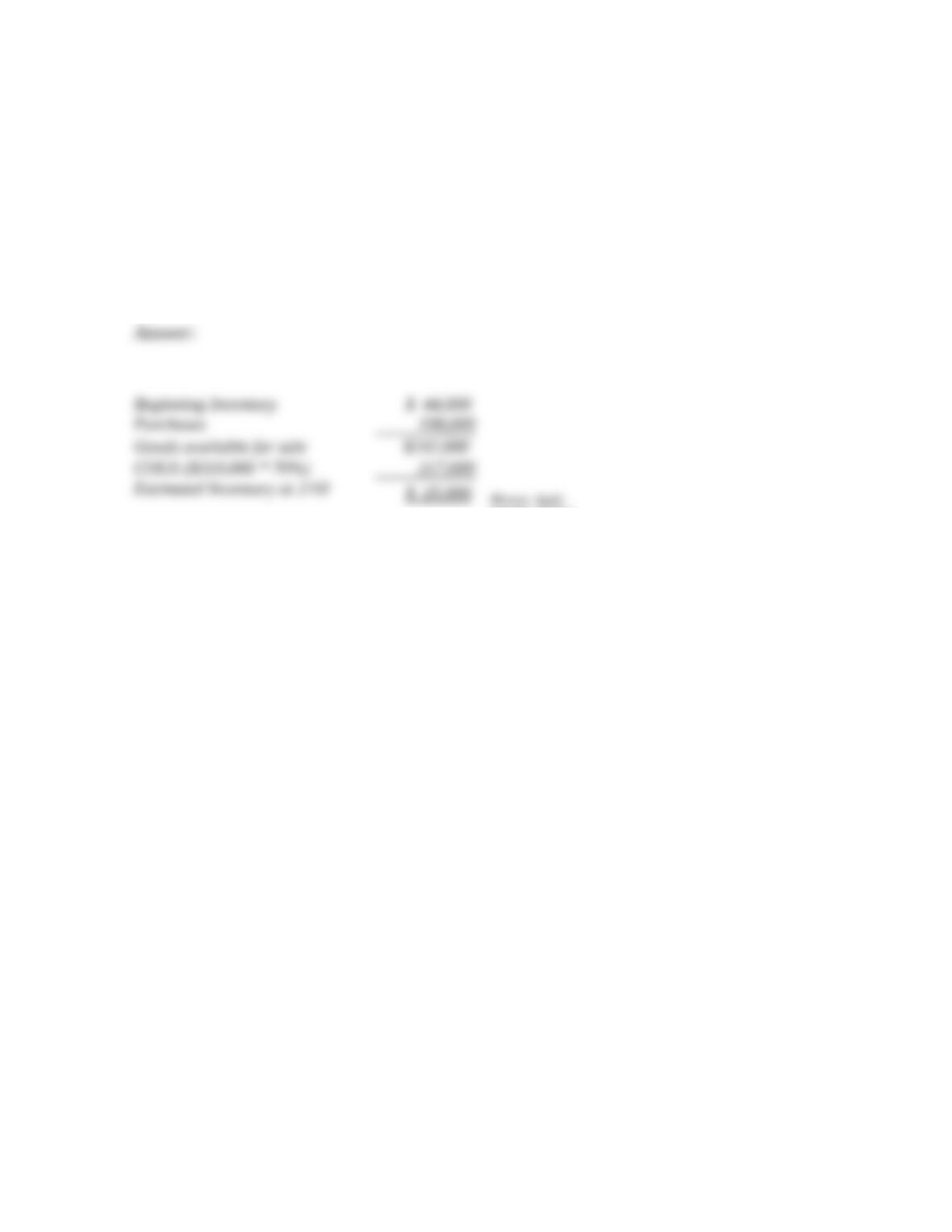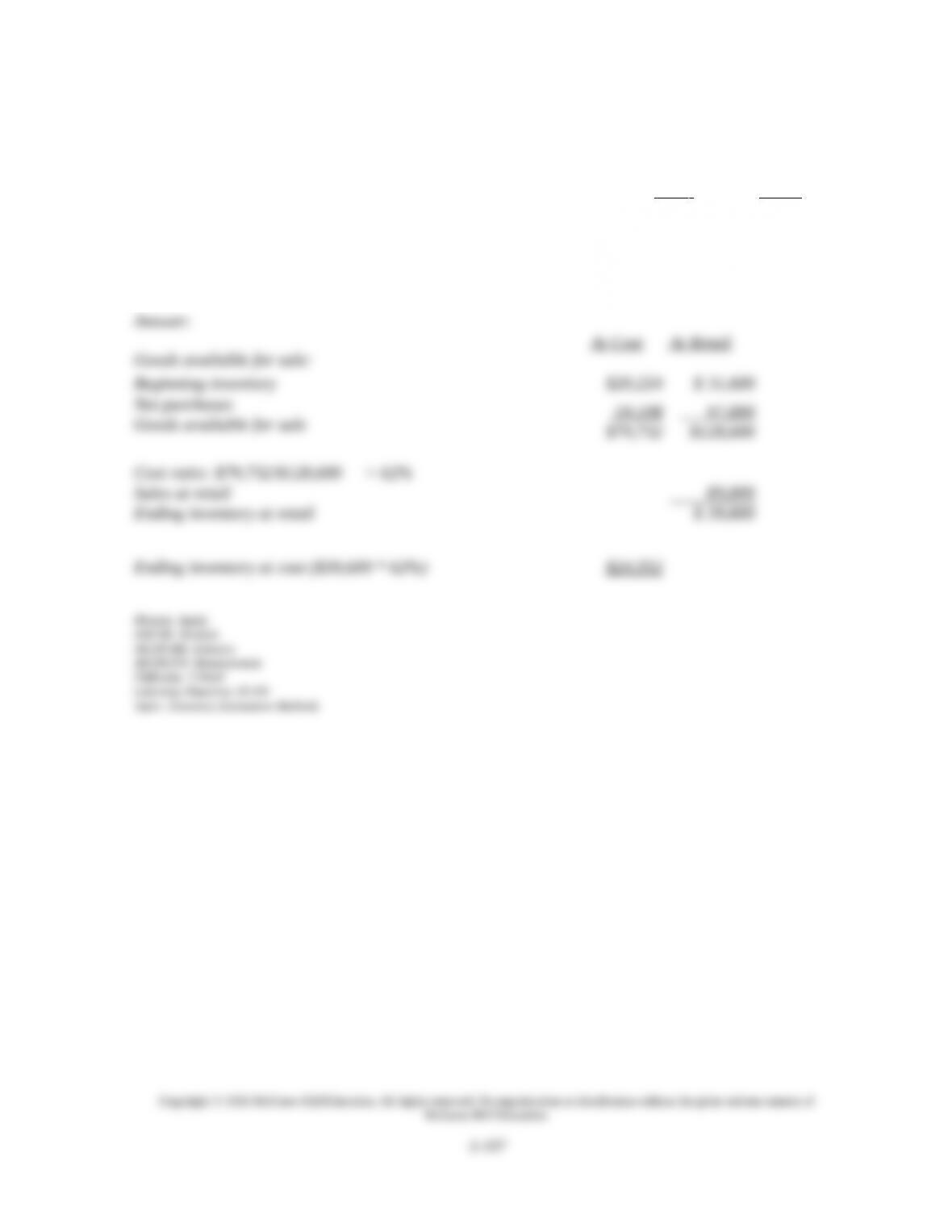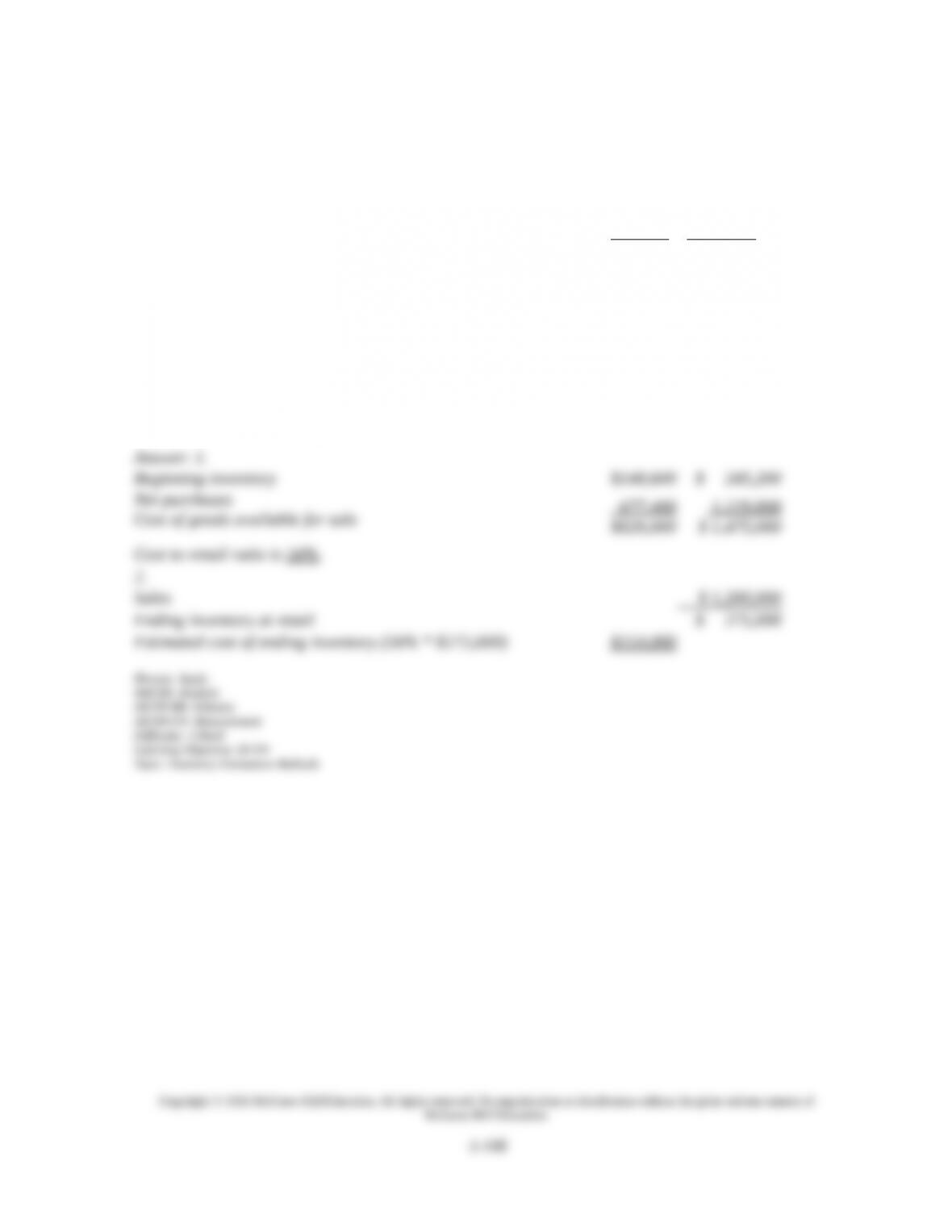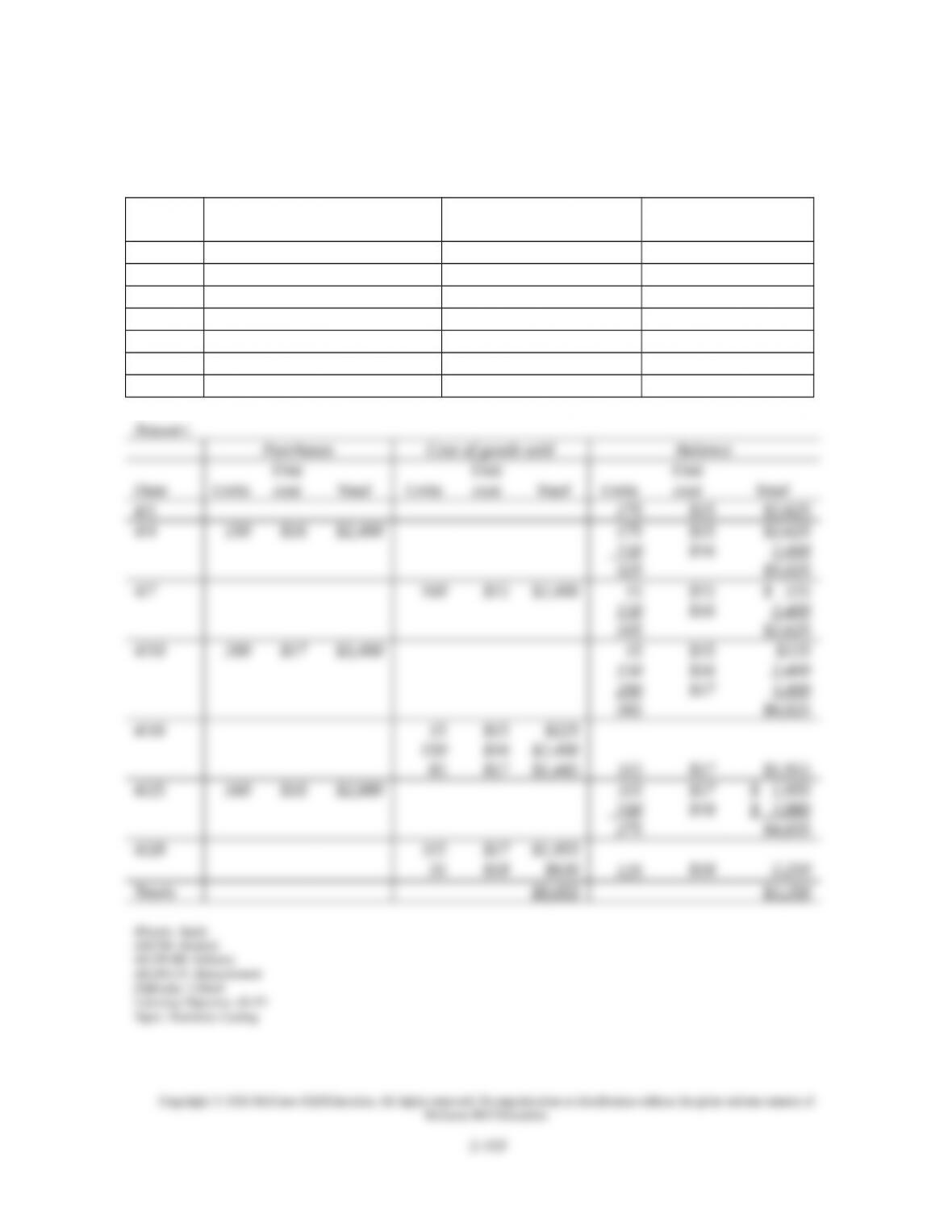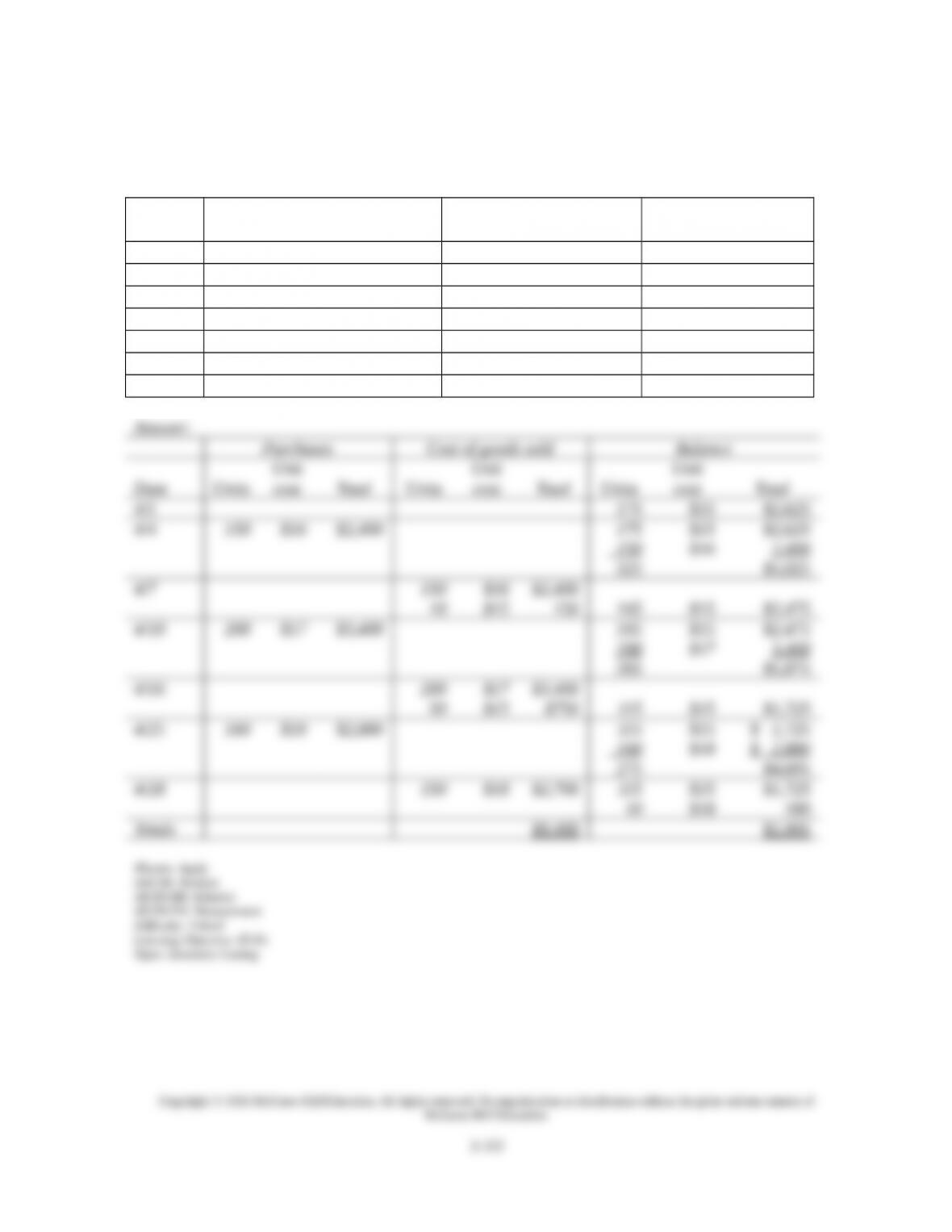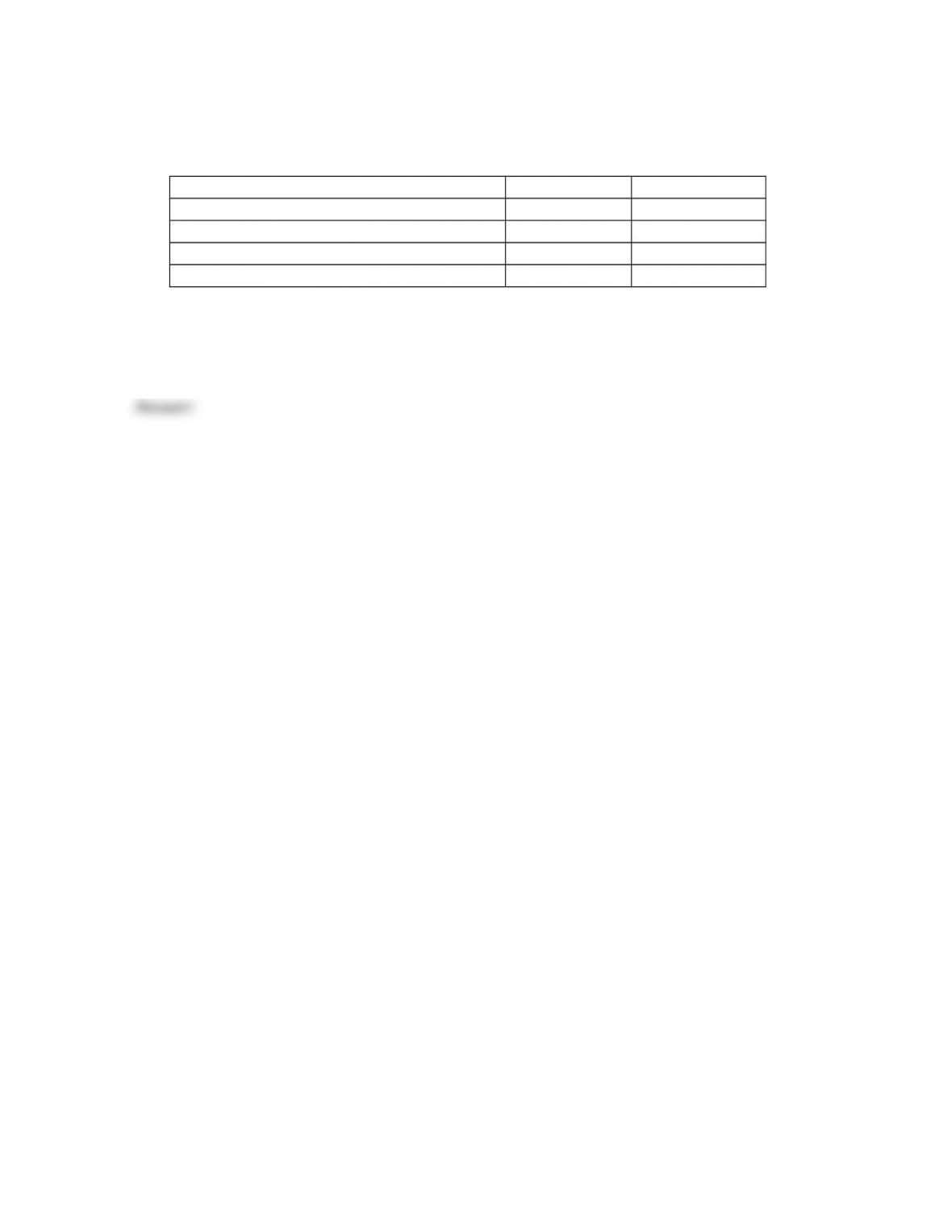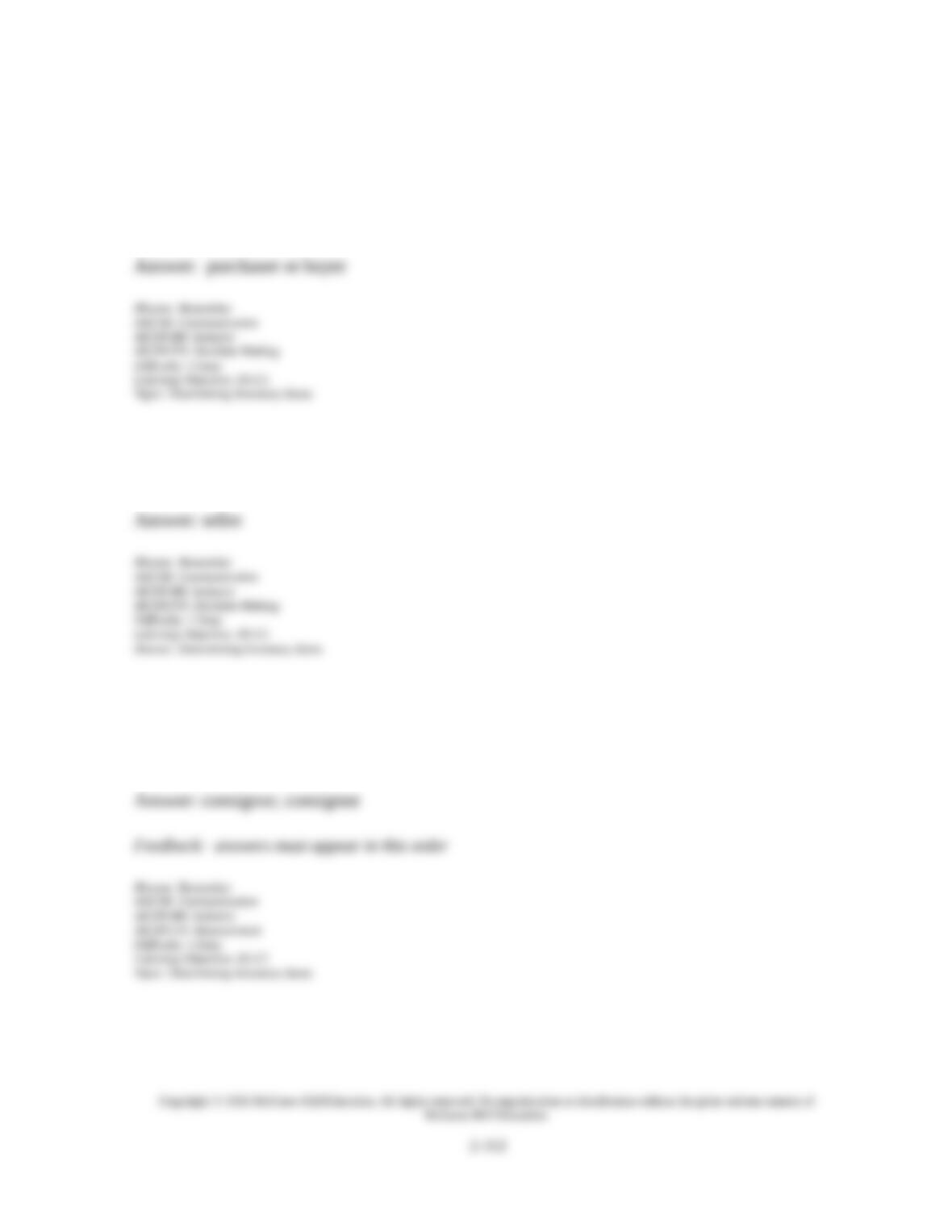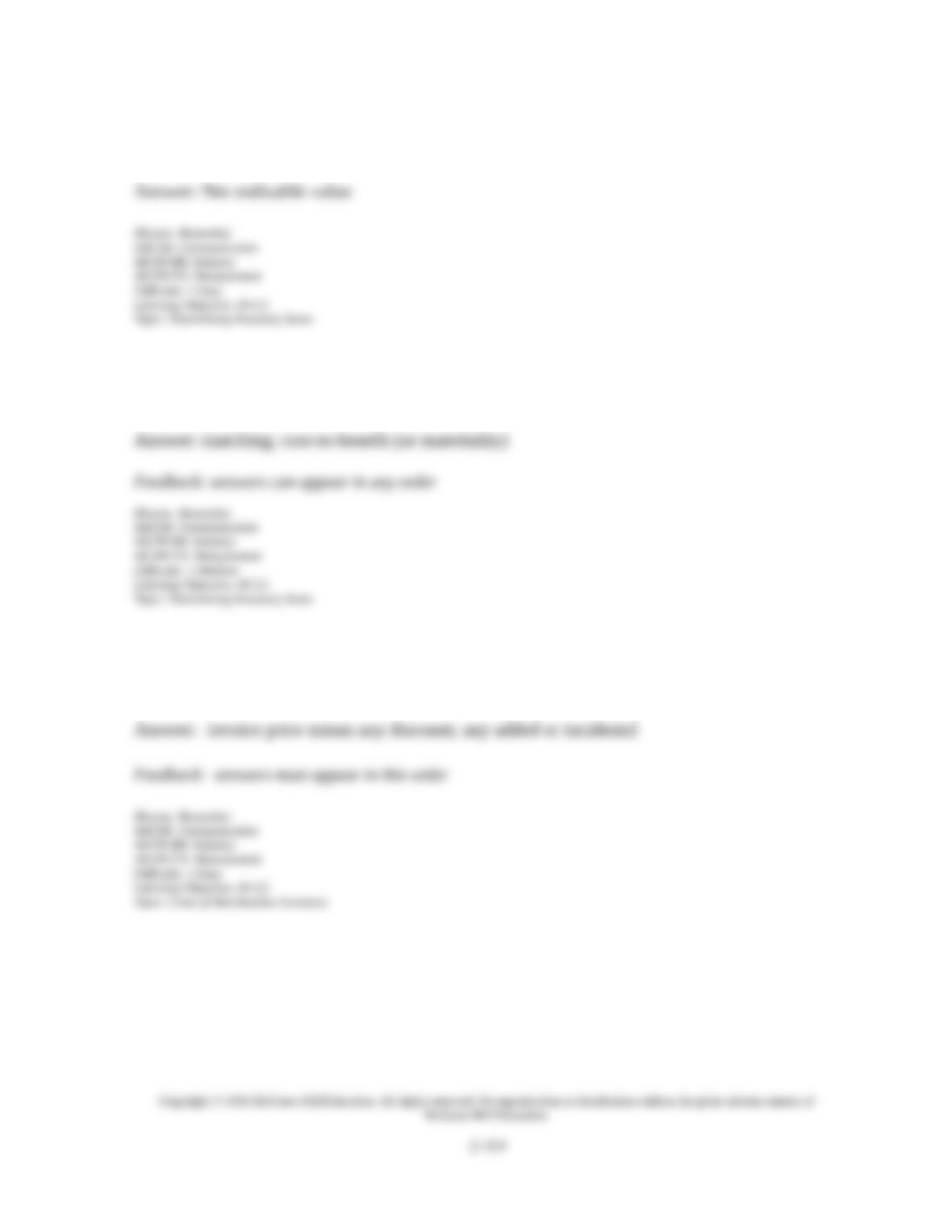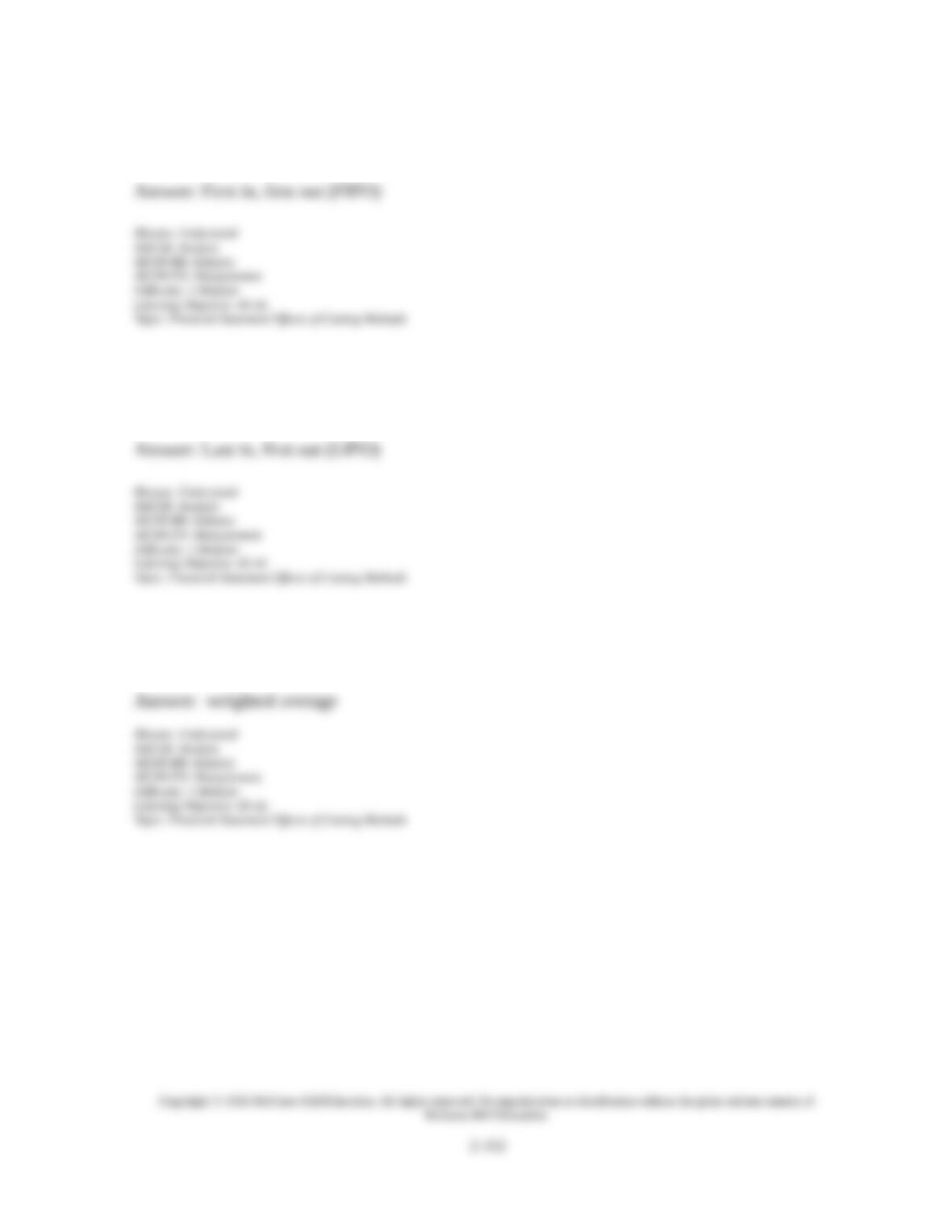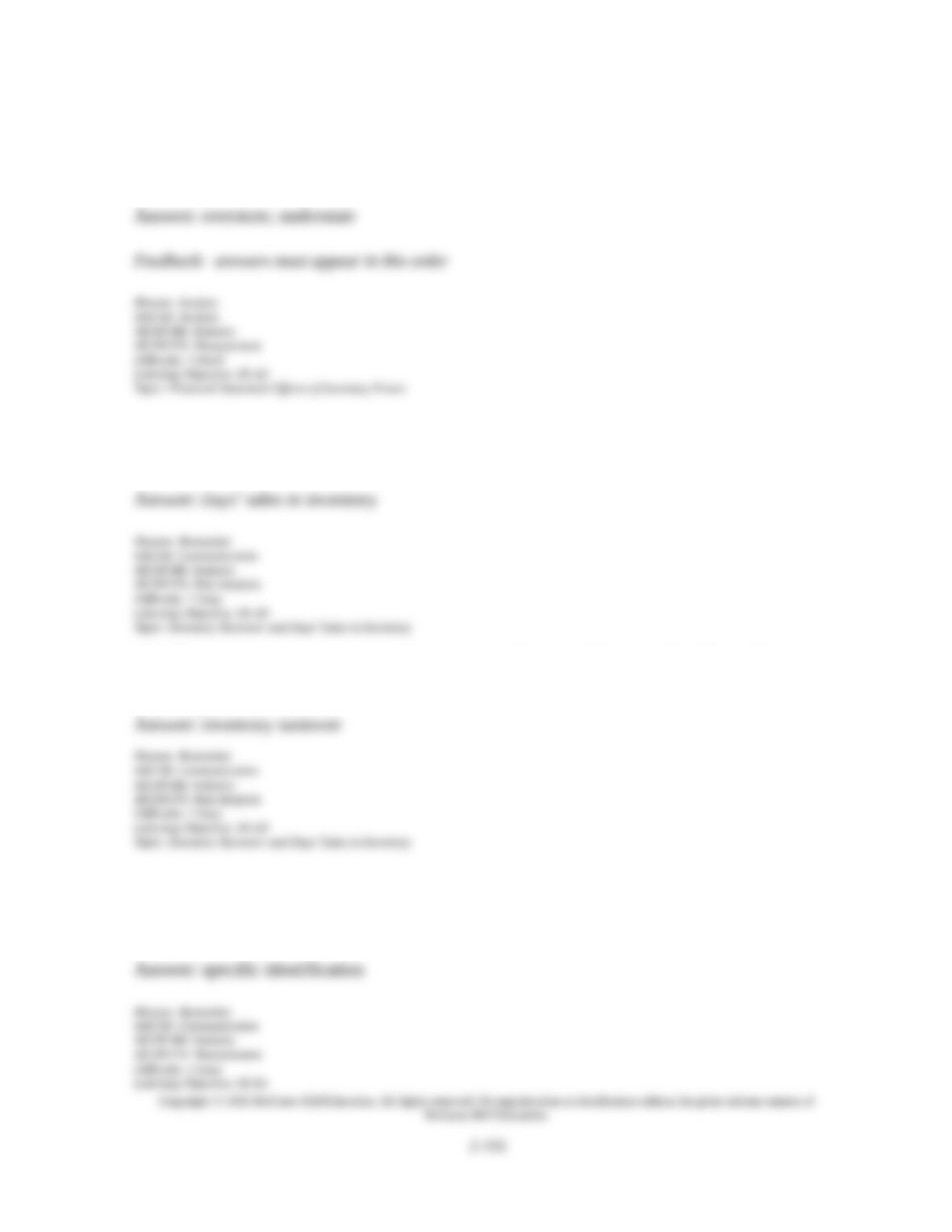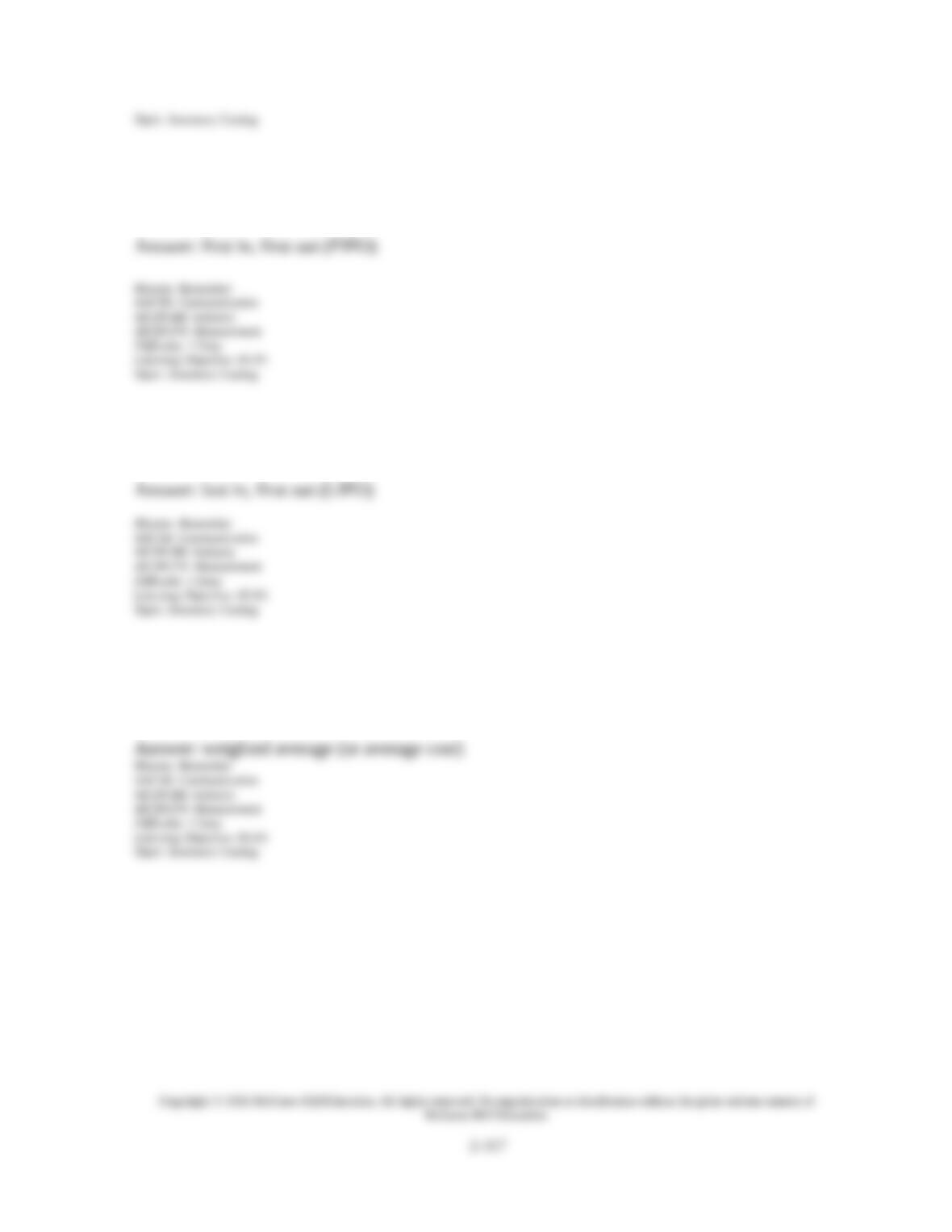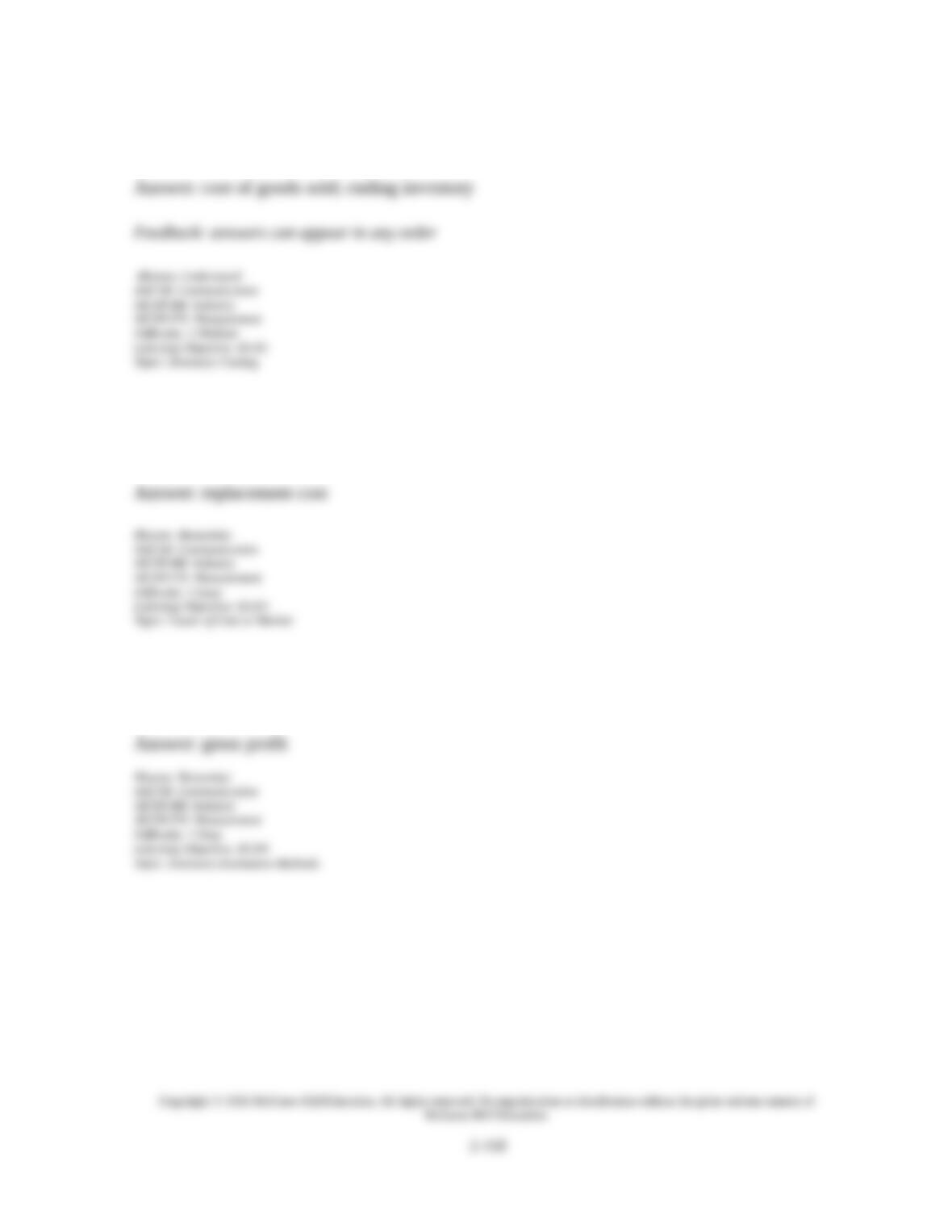198. Forever Young Game Stores (FYG) has taken a physical count of its inventory at March
31, its fiscal year-end. After reviewing the accounting records and documentation, the
following items have been discovered:
(a) An invoice from Shreck Co. indicates that $30,000 of games were shipped to FYG on
March 27, terms FOB shipping point. The games and invoice did not arrive at FYG until
February 2 and were not included in the physical count.
(b) An invoice from Gamers, Inc. indicates that $8,000 of games were shipped to FYG on
March 29, terms FOB destination. The games and invoice did not arrive at FYG until
February 2 and were not included in the physical count.
The physical count and cost assignment on March 31 prior to these two items is $440,000.
The cost of goods sold for FYG is $2,100,000.
1. Calculate the amount that should be reported as ending inventory for FYG.
2. Calculate the days’ sales in inventory before and after the appropriate adjustments for
inventory.
1. The ending inventory should be adjusted to $470,000. Only the $30,000 invoice needs to be added
since it was shipped FOB shipping point, the owner (FYG) should include the inventory in the ending
balance. ($440,000 + $30,000 = $470,000)
2. Before adjustment: $440,000/$2,100,000 * 365 = 76.5 days
After adjustment: $470,000/$2,100,000 * 365 = 81.7 days
Blooms: Apply
AACSB: Analytic
AICPA BB: Industry
AICPA FN: Measurement
AICPA FN: Risk Analysis
Difficulty: 3 Hard
Learning Objective: 05-A3
Learning Objective: 05-C1
Topic: Inventory Turnover and Days’ Sales in Inventory
Topic: Determining Inventory Items
Copyright © 2016 McGraw-Hill Education. All rights reserved. No reproduction or distribution without the prior written consent of
McGraw-Hill Education.
5-109




























































































